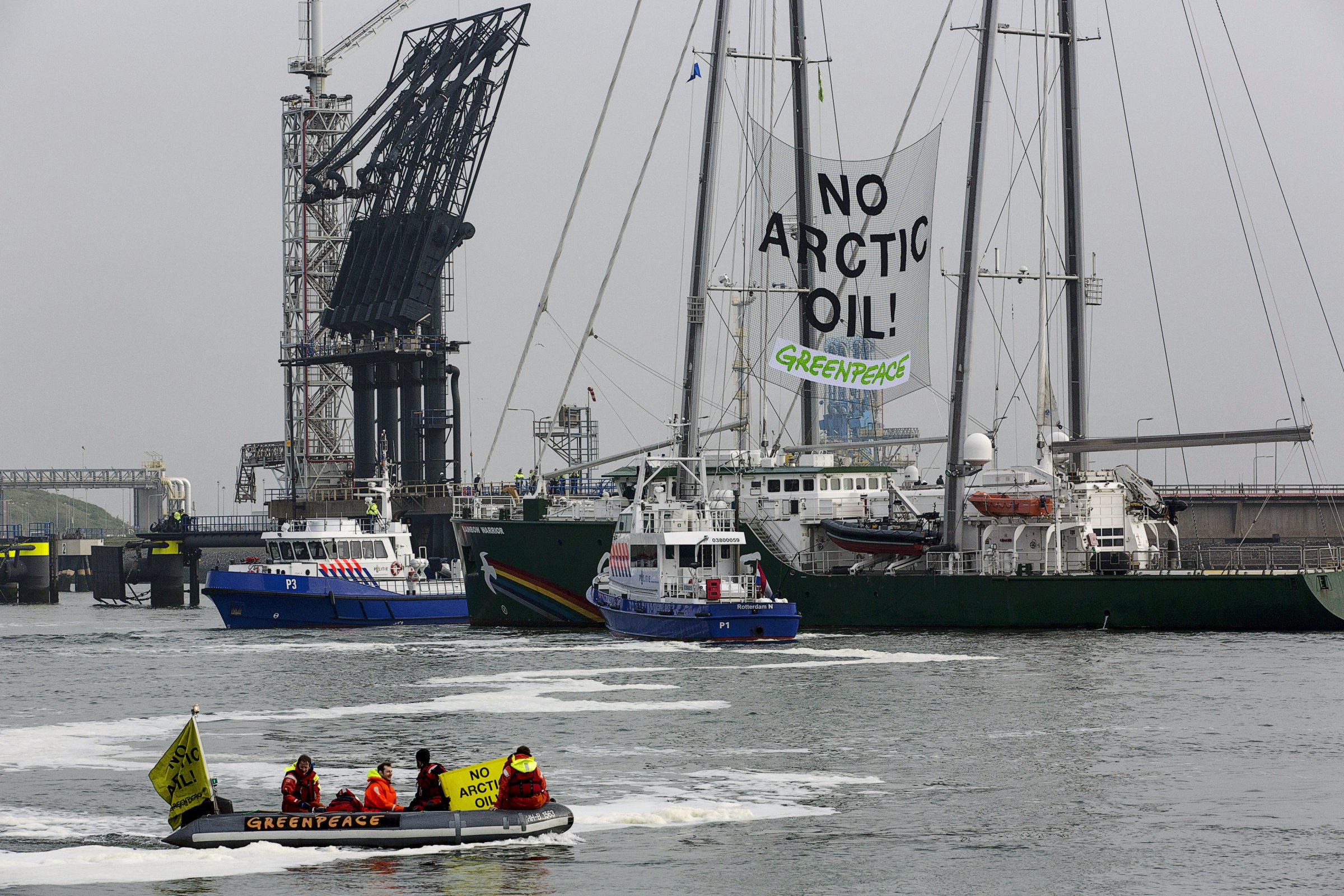
In one of the final and most dramatic environmental actions of Barack Obama’s time in office, the president banned new oil and gas drilling in nearly all US waters in the Arctic Ocean.
On December 20, the president used the authority granted by a 1953 law to remove the Chukchi and Beaufort Seas from the federal Arctic waters that are considered available for lease. Combined, the two seas make up 98% of the US Arctic water territory — a total area of more than 100 million acres.
Obama’s action, which he announced in conjunction with Canadian Prime Minister Justin Trudeau, was applauded by environmental groups that have been fighting Arctic drilling practices for years. Environmentalists say the Arctic Outer Continental Shelf’s underwater canyons provide essential habitats for sea animals, many of which are facing endangerment due to the extreme warming of Arctic waters. Drilling and excavation on the sea floor could lead to even more species extinction — not to mention the impact the extracted oil would have on the earth’s climate once it gets burned.
The law Obama used as the basis for his action is called the Outer Continental Shelf Lands Act, and was passed under President Eisenhower. The act gave the president the ability to sell leases to oil companies who want the right to tap into oil reserves on the Outer Continental Shelf, the underwater land around the US.
But according to one clause in the law, the president also has the ability “withdraw from disposition any of the unleased lands.” Obama took that power seriously yesterday. With almost all the unleased lands now considered protected (or unavailable for drilling), no new leases will be granted. (Oil companies who currently have leases will be able to stay, unaffected.)
Because the 1953 act didn’t include any provision for reinstating Outer Continental Shelf lands for drilling after they’ve been withdrawn, the White House has defined the action as permanent.
That claim of irreversibility seems specifically aimed at protecting Arctic waters from Donald Trump, who has promised to open more federal land to drilling and resource extraction. If the President-elect does try to undo Obama’s action once he takes office, he will likely face a court battle to determine whether it’s legal to reinstate federal land that a former president has previously put under protection.

Oil industry advocates have already voiced opposition to the action, suggesting that Donald Trump will find a way to reverse it.
“Blocking offshore exploration weakens our national security, destroys good-paying jobs, and could make energy less affordable for consumers,” Erik Milito, American Petroleum Institute’s Upstream Director, said in a statement.
But not all oil producers seem shaken by the change.
“It is important to realize that significant development or production from these deep-water areas will not happen in the current pricing environment, it will take much higher and sustainable prices,” Avi Mirman, CEO of Lilis Energy Inc, a Denver-based oil and gas exploration and production company, tells Business Insider.
Mirman suggests that Obama’s ban is largely symbolic, since Arctic exploration is such a risky, costly endeavor, and US shale now offers companies cheaper extraction options. (Plus, oil production in the Arctic makes up just 0.1% of the country’s oil production, according to the Washington Post.) Oil giant Shell illustrated Mirman’s point in 2015, when it abandoned its drilling operations after spending over $7 billion hunting for oil in the Alaskan Arctic.
“Also, the infrastructure needed for such project is extremely expensive and will take many years to build given the climate and available times to work in those areas,” Mirman explains, suggesting that exploration and production companies like his will focus instead on more cost-efficient projects.
Companies who still wish to pursue Arctic drilling, however, could do so in Alaska’s state waters — the same 1953 law gives states control over the underwater area 3 miles offshore of their coastlines. After that, it’s federal territory.
Although the Arctic drilling ban represents a major milestone for environmental groups, many advocates immediately started using the action as an example of protections that could be extended to other parts of the Outer Continental Shelf.
“We must afford the same protections to the people of the Gulf of Mexico, which has become an energy sacrifice zone,” Friends of the Earth Climate Campaigner Marissa Knodel said in a statement.
Greenpeace US spokesperson Mary Sweeters echoed that sentiment, suggesting that the president’s current five-year energy plan puts residents of the Gulf Coast region at risk of damage from oil spills.
“The job will not be done until no new leases are granted anywhere in US waters,” she said.













